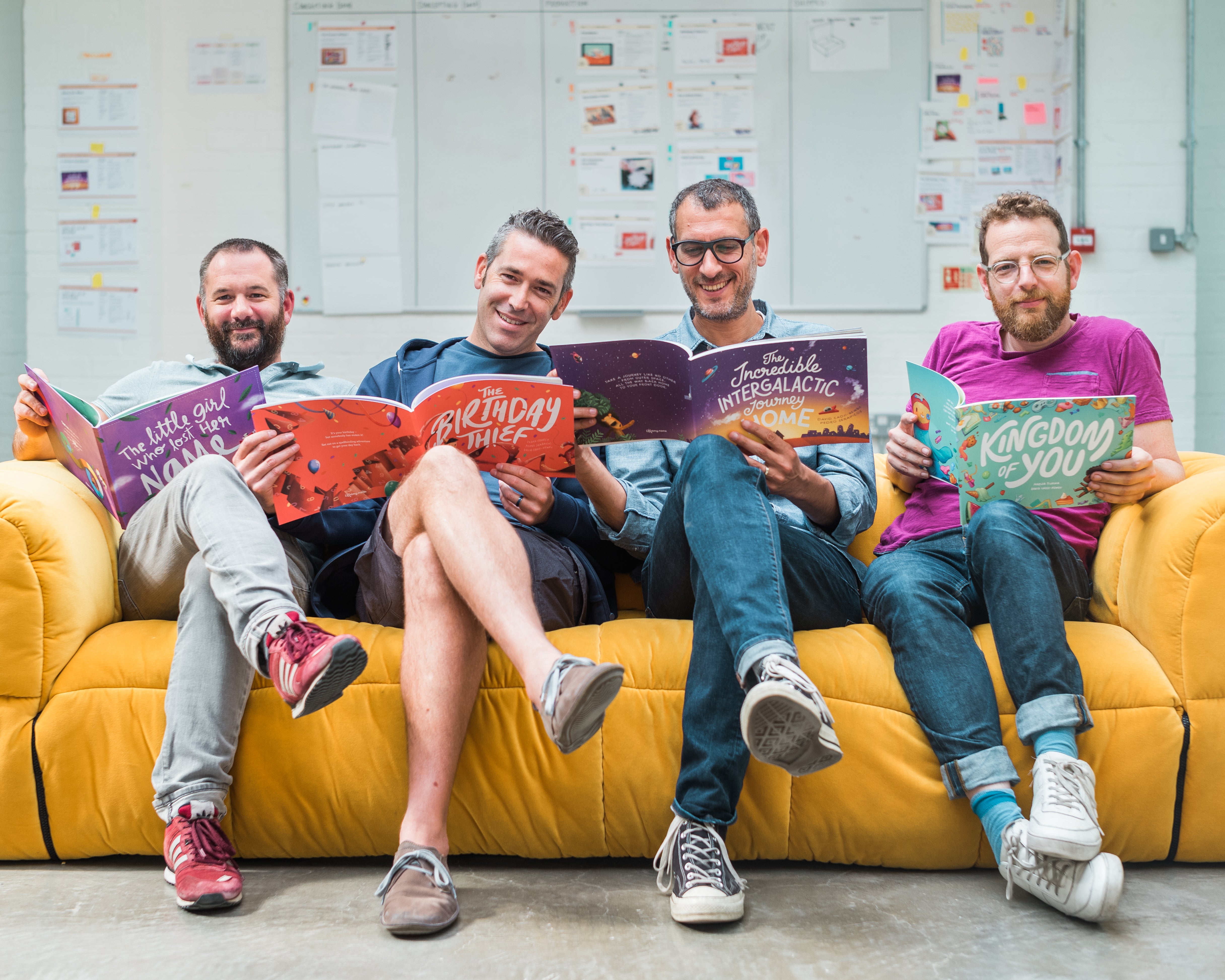Wonderbly and the coming of age of the personalised book
David Cadji-Newby and Asi Sharabi spoke to Andy Martin about how important personalised books can be in our children’s development


Keen readers have been known to pay vast sums of money to have their names glued to characters in novels by Lee Child or Ian Rankin or Stephen King – even when those characters may be bad guys or doomed to destruction and in any case bear no resemblance to the person writing the cheque (mostly to good causes but still).
Just think, though. How would it be if you could be in a book and it really is you, with your name and your appearance? The “personalised book” pulls it off and the genre has come of age with the personalised books for children produced by Wonderbly.
I have no difficulty imagining what that book would be like if it had me in it, because the author and co-founder David Cadji-Newby explained it. “Andy would wake up and realise that he has lost his name. But then he meets a series of characters who help him get it back. You help them with a problem and they help you in return. An Aardvark provides him with an “A”. Then he bumps into a Narwhal who gives him an “N”. Then a Dragon and a Yeti help him complete it.”
In 2011, when Thalia, the daughter of co-founder and chief executive Asi Sharabi, had her third birthday, she was sent a personalised book from Israel in Hebrew. Sharabi was taken with it but also underwhelmed. “It was a great idea, poorly executed,” he says but he saw the potential and took the concept and discussed it with David Cadji-Newby and asked him if he could do better.
They had met at an advertising agency. Sharabi had studied at the LSE and did a PhD on social representation theory with some notion that he might be able to “help make Israeli and Palestinian children hate each other a little less”. David Cadji-Newby on the other hand, after a degree in English literature at Queen Mary University of London, “couldn’t wait to get out of academia”, and was trying his hand at scriptwriting and copywriting.
“I was working on as many creative projects as possible,” he says. “All of them unpaid. Maybe one of them would work out and be successful. I had grander ambitions than copywriting.”
So naturally, when Sharabi asked him if he was interested in the personalised book idea he said he’d give it a whirl. Until this point, personalised books had been a novelty, not serious works of literature. They were content to pick on the most popular names and tack on the name to any pre-existing story. It was about as personalised as a mug or a fridge magnet with your name on. The point, thought Cadji-Newby, was to fully integrate real individuals into the narrative, to make the book personal through and through. He had a five-year old boy, Elias, and he wanted the idea to work for him.
But the first name he chose was “Andrew”, because it began with an A. “It had to stand on its own feet as a piece of literature,” he says. “The challenge was to take a derided category and make it into something respectable.” Sharabi chips in: “A personalised book that doesn’t suck!”
Lost My Name was the result. Using the English alphabet, they would need 26 letter-modules as a baseline but because names can contain repeated letters (Mrs Cadji-Newby, for example, is “Emmanuelle”) it was more like double that and double again for the purpose of back-ups and extras (for people like Asi with short names). “One of the reasons why no one had done it before,” says David, “is because it’s so labour-intensive”.
For children aged three to six, it helps them to understand what it is to have an identity and to be an individual agent. For the rest, it tells them they are unstoppable
It took six months to come up with the first physical copy of the book. At the same time they had been downloading thousands of names from the most recent census and building the website as customers provided data points. At the end of 2012, they sold the first 120 books to customers that were not friends or family. The feedback was overwhelmingly positive. “That was the validation we needed,” says Sharabi. “We knew the idea was marketable.”
They launched properly a year later, with more stories and a bigger website, in time for Christmas. They expected to sell a couple of thousand books. They had orders for 30,000 in 50 different countries. Sharabi says: “We were taken by surprise. From Dave’s kitchen to a million worldwide – that was a hell of a journey.”
Lost My Name has now sold four million copies using nearly 400,000 unique names. Wonderbly has sold more than six million books and has won the 2021 Children’s Publisher of the Year award. They achieved everything they set out to achieve but Sharabi reckons they were also victims of their own success. “We had to show we weren’t just a one-trick pony. That took us a while. To find the higher purpose beyond the gimmick.”
Because they are both publishers and booksellers, Wonderbly has developed a close relationship with customers – their readers (and their readers’ parents). What Sharabi and Cadji-Newby discovered was that their books were performative and transformational. Children aged up to eight were reading (or being read to) about themselves and were changed and charged up by the experience. “Kids see themselves doing something important,” says Sharabi. “You have this in you. Then they can replicate it in their own lives.”
In The Wondrous Road Ahead parents even get to choose what qualities they want to instil in their child. “The parent is, in effect, a co-author,” says Cadji-Newby. “It’s a bespoke message.”
Sharabi wants to go back into the academic realm to conduct a thorough analysis of the social and educational benefits, “the added value”, of the personalised book but he already has a pretty good idea. “The specific benefit for the newborn is the bonding experience. For children aged three to six, it helps them to understand what it is to have an identity and to be an individual agent. For the rest, it tells them they are unstoppable.”
Cadji-Newby adds: “It also makes them fall in love with reading. The initiation into reading can be daunting. The more democratised the better. We provide the narrative framework but the customer completes it.”
I am planning to buy books for sisters Sadie (three) and Darcey (six). I’m hoping they will discover how much they have in common (A and D and E) while nevertheless having stories that are distinctively their own.




Join our commenting forum
Join thought-provoking conversations, follow other Independent readers and see their replies
Comments